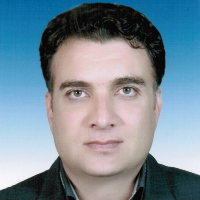System Dynamic Model of Groundwater Exploitation Management and Artificial Recharging Performance (Case Study of Nessa Plain, Bam, Kerman)
In recent decades, the technique of systems analysis has attracted serious attention in planning and management of water resources. This research was based on the idea of modeling surface water resources and connecting them to the aquifer in the form of separate subsystems, taking into account the side factors. In fact, this study considered the interaction of surface and groundwater, using system simulation and integrated dynamic connection between surface and groundwater resources in the area. In other words, one of the innovative aspects of this research was the integrated management of surface and groundwater through the dynamic system method. System dynamics (SD) is among the available tools for simulating complex water resources systems, in which the links between the system elements are expressed as causal relationships. The SD-based software packages can serve as flexible and integrated tools for a wide range of modeling applications, from participatory modeling to economic analysis. First, the conceptual model and causal relationships between the effective parameters in the groundwater equations of the plain were prepared, and then the model was made in the Vensim software. Monthly data for water use and resources were imported to the model, in Excel format. Afterwards, the scenarios were designed and defined for the model. Finally, the performance of the catchment was examined in terms of meeting the desired needs and maintaining groundwater balance. Since the climate is continuously changing due to man-made activities, the output of GCM models was used in this research to assess the different management scenarios. So, the GFDL-ESM2M model was employed to predict the future rainfall, under the fifth average future climate scenarios (RCP4.5). The reason for choosing GFDL_ESM2M model was that it has been recently developed by NOAA to gain better understand of the Earth's biochemical cycle, including human actions and interaction with the climate system. Then, river runoff was simulated using derived rainfall in the time period of 2015 to 2030, through ARMAX statistical model. This runoff time series then was fed into the system dynamic model to assess the water balance of the study area under different management scenarios. This study was to evaluate the condition of the aquifer, apply recharge scenarios, and improve the groundwater storage system of the Nesa plain in Bam County, Iran. A comprehensive model was thus developed based on the SD approach. Within this system, the relationships and the feedback of the changes in the sub-systems were expressed using cause-and-effect diagrams. In order to implement the model, several scenarios were further considered alone or in combination with each other. Due to the outputs of the prepared model and regarding the priorities for allocation of the volume of water stored in the reservoir of the Nesa plain (supply of the drinking water for Bam city, and consumption of industry and services, respectively), water budget in the plain was negative. The water budget of the plain could reach - 65.4844 mcm, in the following 20 years, indicting the critical situation of the region. Given that about 4395 ha of the lands in the region were under the predominant cultivation of alfalfa (approximately 60%) and wheat (about 30%) with a total of 60 mcm of water consumption. modifying the cultivation pattern (eliminating the cultivation of these crops) alone had no significant impact on water balance. Installation of volume meters and implementation of well regulation policy to about 75% of current permits would thus boost the water balance of the region to -44.84 mcm. Via artificial recharging of the plain by flood spreading method, the budget of water resources was equal to -35.17 mcm, which implies the success of the combined policy. Therefore, the application of regulatory policies and the implementation of modern irrigation systems, especially for date orchards (as the main crop in the region) with an annual consumption of about 2300 mcm/ha, and preventing the drilling of more wells could be steps towards balancing the water resources in the region. This could not be possible except through the cooperation of stakeholders and beneficiaries along with the implementation of support packages. In general, assessing the process of flood spreading, recharging the groundwater aquifers, raising the water level of wells, increasing the discharge of springs and canals, improving the quality of the groundwater, and meeting the satisfaction of local communities will bring about a decrease in urbanization and rural prosperity.
- حق عضویت دریافتی صرف حمایت از نشریات عضو و نگهداری، تکمیل و توسعه مگیران میشود.
- پرداخت حق اشتراک و دانلود مقالات اجازه بازنشر آن در سایر رسانههای چاپی و دیجیتال را به کاربر نمیدهد.



